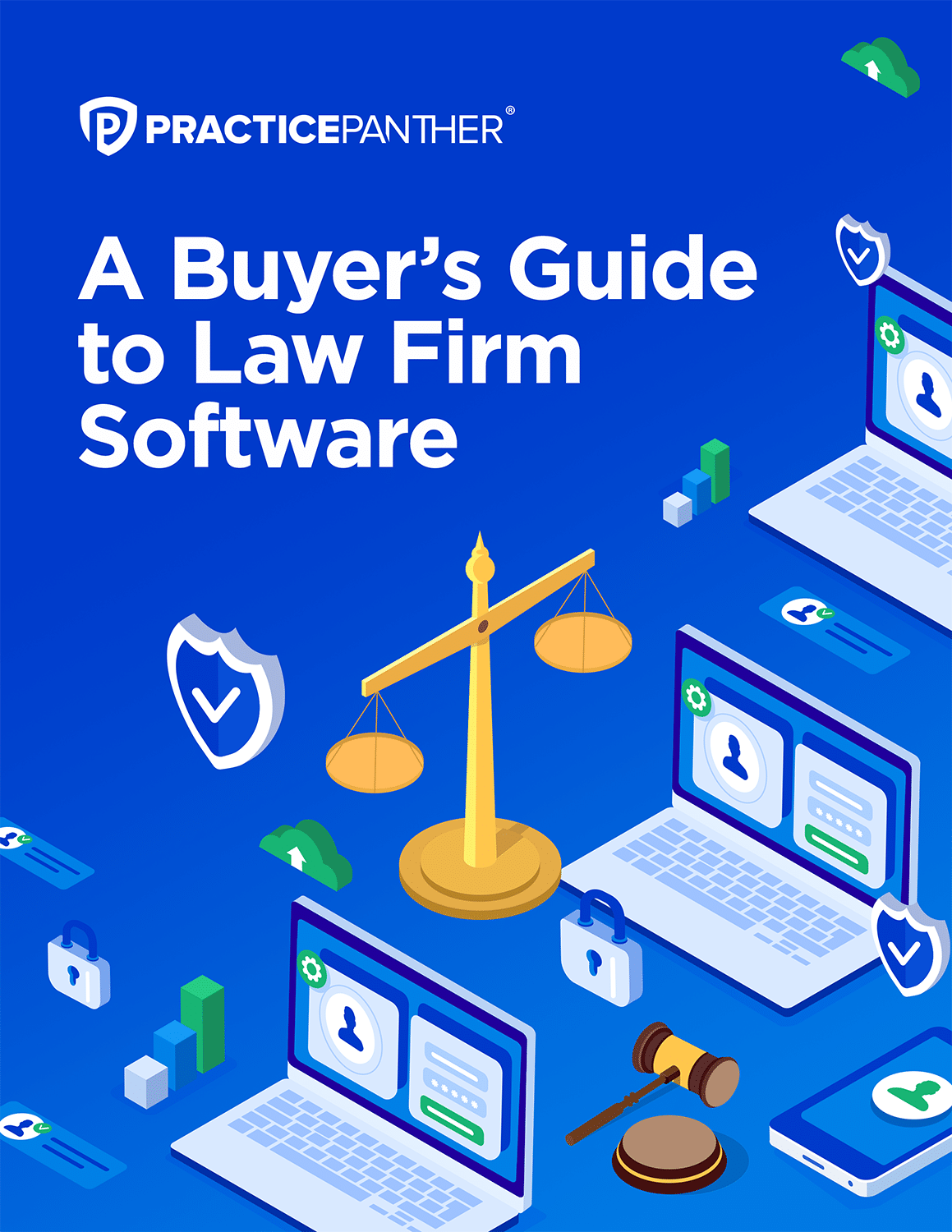While the middle of a calendar year brings summer, children out of school, family vacations, and often slower court schedules, it also provides a halfway point for law firms to review and reflect. By now, your law firm’s marketing strategy should have two fiscal quarters’ worth of data with which to evaluate how its marketing campaigns are going.
Each type of marketing endeavor will beget different data – social media metrics revolve around reach, engagement, and clicks, for example, while Google Ads campaigns focus on top of page rate, impression share, and of course conversions.
No matter what type of marketing your law firm is doing – whether paid or unpaid – now is the time to take a hard look at what you’ve done so far this year and see what’s working well, what could use improvement, and what should be discontinued.

How To Evaluate Your Law Firm’s Marketing Effectiveness and Make Adjustments
If you haven’t been tracking the return on investment (ROI) of each marketing effort and/or expenditure as accurately as possible, now is the time to immediately rectify that so you have better data with which to evaluate effectiveness moving forward. This means using dedicated call tracking numbers and tracking URLs for every single effort, whether a billboard, print advertisement or email marketing piece.
If you use the same phone number and same website on all of your ads and channels, you will never be able to accurately identify what leads came from which source and therefore which campaigns are performing best. You must also have Google Analytics and Google Search Console set up and functioning in order to take full advantage of the free metrics, data, and error reporting these tools offer.
If your law firm already has the best possible tracking set up, you are ready to evaluate your first and second-quarter efforts. Below, I discuss some of the most common types of law firm advertising expenditures and how best to analyze their effectiveness.
Another way to track how your firm’s marketing is performing is with law practice management software. PracticePanther comes with native features like custom tags, which can be used to track your lead generation. Tags can be labeled as “LinkedIn Ad Campaign” or “Homepage Client Intake Form” so you can track which campaign is generating the most ROI for your firm. You can then run a report filtered with these custom tags every quarter to assess your campaign’s performance. Your firm can then determine which campaigns should be paused or where there are opportunities for growth.

Social Media Marketing
All social media channels have free analytics available natively within each platform. Once you log in, you can access this data – although the length of time you are able to look back varies by platform. This is why it’s a good idea to keep a spreadsheet of monthly numbers to track trends over time. While the metrics may have different names across the various platforms, the important concepts are the same.
You should track follower growth, and engagement metrics such as likes, shares/retweets, replies/comments, and clicks. Looking at this information from month to month should show overall increases across the year; however if there is some vacillation, that’s normal and to be expected.
Once you’ve reviewed the overall trends, you should drill down into individual posts/updates to see which performed best, and look at what the subject matter was, what language you used in the social caption, what imagery was used, the day and time it was posted, and – if you promoted it – how much you spent and who you targeted.
Identifying what resonates with your audience and what most effectively gains you a wider audience and generates the highest engagement will help shape the type of content you prepare to share in the second half of the year.
For example, if you showcased a lawyer’s speaking engagement with a custom graphic and link to the event and that post outperforms the general average engagement metrics, be sure to find out if additional firm lawyers have upcoming speaking engagements – and consider seeking out and booking more.
Search Engine Optimization (SEO)
So many lawyers tell me they just have no idea whether their law firm website’s SEO is going well or not. This is generally because the vendor they are working with is not providing meaningful reporting that details what the campaign objectives are and how their work is helping the firm progress toward its goals.
Developing a content calendar based on an analysis of the law firm’s existing web pages and keyword research to ensure content is added in a meaningful way on a consistent basis throughout the year is crucial to SEO success. If your firm is handling content creation, posting, and sharing in-house, this editorial calendar can be developed by the firm’s lawyers who know their practice areas best and know what questions clients are asking.
This content should absolutely be finalized and implemented by marketers who know how to take this information from lawyers and translate it into posts that will perform well in search engines. You can evaluate the success of each webpage and blog post by looking in Google Analytics at engagement metrics or Google Search Console at impressions.

In addition to strategically adding content, all competent SEO vendors should be tracking organic rankings in both search results as well as Google Maps results for all targeted keyword phrases. We measure this using multiple tools for our clients, one of which is Rank Ranger. We track the performance of each client’s website for all of the terms the firm wants to rank for in order to procure relevant, qualified leads for new business.
While rankings do not always improve in a straight upward trajectory, they should generally be moving up on average over time with the goal being to reach the top three organic search results and the top three Maps results for all targeted keyword phrases.
If the content isn’t performing well and/or your website’s organic rankings are not improving or are even tanking and falling below their previous heights, your marketing strategy should adjust accordingly. For example, if your firm used to rank on page one in result one for “commercial litigation lawyer” and now has dropped onto page two for this phrase, something bad has happened.
You need to use Analytics and other external tools to figure out what happened and how to rectify it – but, you’ll never know and never act if you aren’t meaningfully tracking your rankings in the first place.
Google Ads
Google Ads is the most commonly used paid online advertising mechanism for most businesses, including law firms. If your firm is running Ads internally, you will have access to the actual ad account being used so you can follow what’s going on in real-time. If you are working with a vendor, you will likely not have access to the ad account but should be able to see some of the important data with delegated access.
Even if you are without access, you can and should request at least monthly reporting from your in-house team or outsourced marketing vendor so you can see how your campaign(s) are performing.
The important metrics to look at for Google Ads include impressions and clicks – impressions divided by clicks give you the click-thru rate (CTR), or the percentage at which those shown your ads decide to click on them. If this number is above three percent for most practice areas in a competitive geographic area, you’re doing well.
In addition to the CTR, you will want to monitor the cost per click to ensure that how much your firm is paying for each click is really worth it in terms of the potential case value of an ultimately acquired case.

As campaigns are optimized, the cost per click should go down. If you are paying astronomically high prices for clicks after running a campaign for lower-value cases for many months, the campaign is not properly optimized. You can review ad copy, targeting, bidding strategy, budget, and the landing page to which you are driving the traffic to see what can be adjusted to improve things.
Impression share and top-of-page rate are also important considerations. If your law firm’s impression share is the highest of its competitors but not too high to be a waste of money, that’s good. If your impression share is far below that of your competitors, that means your ads are not showing as often as they should be and you likely have too low of a budget to be appropriately competitive.
The majority of users who click on Google Ads click on the ads at the very top of the page, and this is why your top-of-page rate matters so much. You want your law firm’s ads to show at the top of the page as often as possible to increase the likelihood of users clicking on them. If this rate is lower than your competitors, you may need to increase your ad spend and/or change your campaign objective to focus more heavily on being at the top of the page.
Of course, the culmination of all of this data is conversions. Your law firm must have detailed conversion tracking set up for its ads, including tracking for live chat conversions, click-to-call conversions, click-to-email conversions, phone call conversions, email conversions, contact form submissions, and more. Dividing your total ad spend by how many valid leads your law firm acquired will yield the acquisition cost per lead. This average cost should also – on average – decline over time and with appropriate campaign optimizations.
The next logical step is to look at each lead internally to see if it was signed as a client and the amount of projected revenue. This information also helps your vendors and/or your in-house team optimize the campaigns – the more information known about which leads are best, the better the Ads can be adjusted to spend more on what generates those leads.

Crucial Marketing Advice for Every Law Firm
Along with the tips interspersed above, there is one important digital marketing tip every law firm should prioritize. Whether you are running Local Service Ads (LSAs), Google Ads, or trying to rank organically for important keywords, the number and quality of your firm’s Google Reviews are crucial to its online success. Firms must be both ethical and strategic when it comes to online review acquisition.
Obtaining three to five five-star reviews (ideally with commentary and not just a star rating) will help increase your website’s visibility in Google Maps and Google Search results. In addition to a minimum number of Google Reviews being required to run LSAs and show up in Maps results, online reviews serve as social proof of your firm’s quality of services, which will impact its ability to convert leads into clients.
The key is to make it easy for clients and other professionals familiar with your firm to leave a review. You can include a short link to your Google Business Profile in a custom email or with PracticePanther, you could send a link for reviews via their 2-way business text messaging feature.





